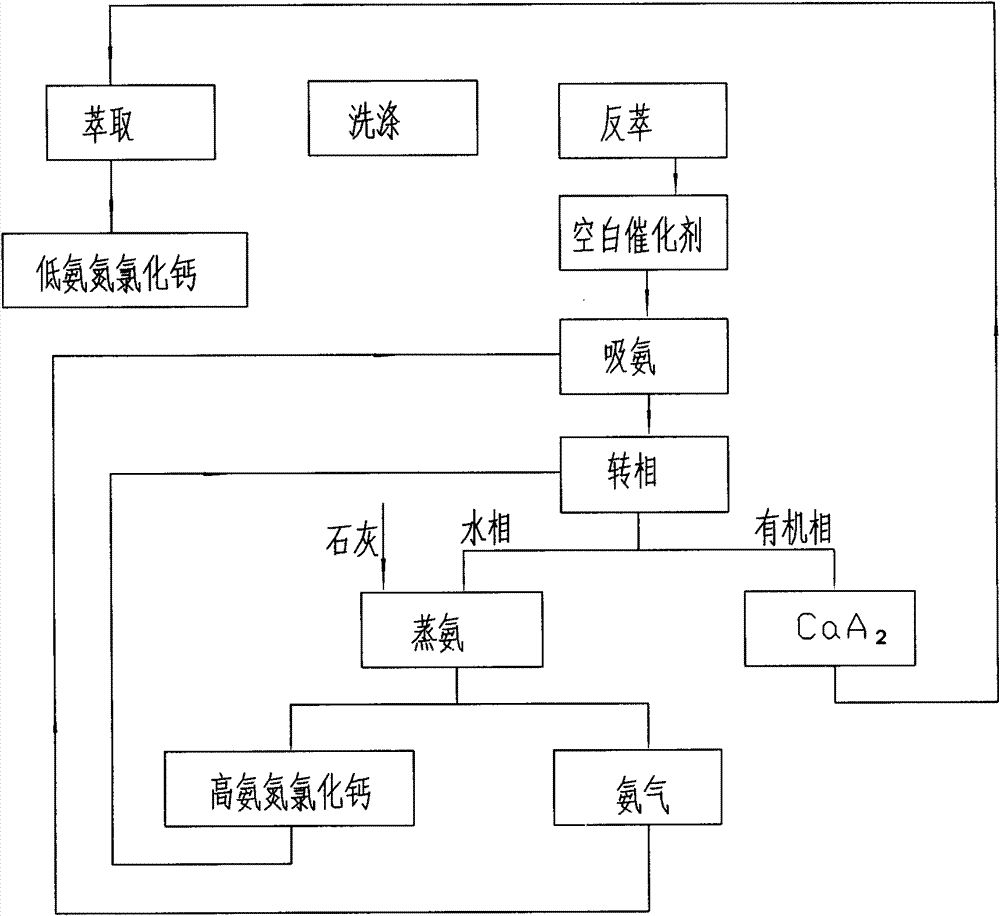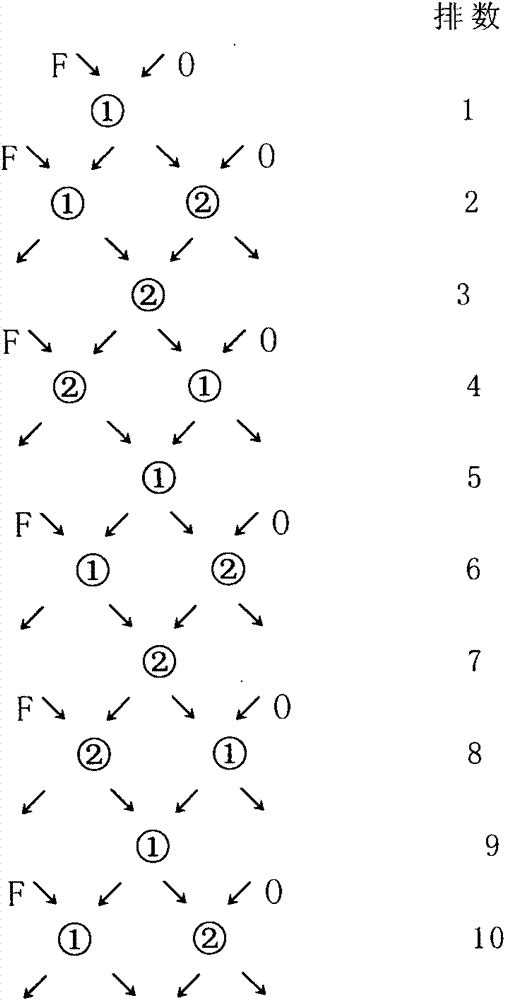Method for preparing calcium soap by utilizing quick lime and method for processing produced emulsified compound
A technology for milk of lime and quicklime, which is applied in the fields of compounds, chemical instruments and methods, separation methods, etc. The effect of low operating cost, reduced consumption and convenient connection
- Summary
- Abstract
- Description
- Claims
- Application Information
AI Technical Summary
Problems solved by technology
Method used
Image
Examples
Embodiment 1
[0035] The process parameters are as follows:
[0036] Take ammonium chloride wastewater with a concentration of 4mol / L from the production line: 200ml; industrial grade quicklime: 30g; blank P507 (organic phase) with a concentration of 1.5mol / L: 3.0L.
[0037] Refer to attached Figure 1~2 , the process steps are as follows:
[0038] a. Ammonia steaming - ammonia absorption
[0039]In a distillation bottle, mix quicklime (CaO) with ammonium chloride wastewater, and heat to distill ammonia. Absorb the evaporated ammonia gas with 3.0L blank P507 with a concentration of 1.5mol / L to form ammonium soap, and the saponification degree of ammonium soap is 25% according to titration measurement; after the reacted solution is filtered or clarified, high-concentration ammonia nitrogen calcium chloride is obtained solution.
[0040] b. Phase inversion
[0041] Add ammonium soap and high-concentration ammonia nitrogen calcium chloride solution into a separatory funnel, mix and stir, ...
Embodiment 2
[0045] The process parameters are as follows:
[0046] Take ammonium chloride wastewater with a concentration of 4mol / L from the production line: 300ml; milk of lime: 40g; blank P507 (organic phase) with a concentration of 0.8mol / L: 10.0L.
[0047] The process steps are as follows:
[0048] a. Ammonia steaming - ammonia absorption
[0049] In a retort, milk of lime (Ca(OH) 2 ) mixed with ammonium chloride wastewater, heated to distill ammonia. Absorb the evaporated ammonia gas with 10.0L blank P507 with a concentration of 0.8mol / L to form ammonium soap, and measure the degree of saponification of the ammonium soap to be 35%; after the reacted solution is filtered or clarified, a high-concentration ammonia nitrogen calcium chloride solution is obtained .
[0050] b. Phase inversion
[0051] Add ammonium soap and high-concentration ammonia nitrogen calcium chloride solution into a separatory funnel, mix and stir, and then separate into layers. The phase inversion operation...
Embodiment 3
[0055] The process parameters are as follows:
[0056] Take ammonium chloride wastewater with a concentration of 4mol / L on the production line: 250ml; industrial grade quicklime: 35g; blank P204 with a concentration of 1.0mol / L: 6.0L, and (LaCe)Cl with a concentration of 1.2mol / L 3 Feed liquid: 20ml.
[0057] The process steps are as follows:
[0058] a. Ammonia steaming - ammonia absorption
[0059] In the distillation bottle, mix quicklime and ammonium chloride wastewater, and heat to distill ammonia. The steamed ammonia gas is absorbed with 6.0L concentration of 1.0mol / L blank P204 to form ammonium soap, and the measured ammonium soap saponification degree is 32%; after the reacted solution is filtered or clarified, a high-concentration ammonia nitrogen calcium chloride solution is obtained;
[0060] b. Phase inversion
[0061] Add ammonium soap and high-concentration ammonia-nitrogen calcium chloride solution into the separating funnel, mix and stir, and then separate...
PUM
 Login to View More
Login to View More Abstract
Description
Claims
Application Information
 Login to View More
Login to View More - R&D
- Intellectual Property
- Life Sciences
- Materials
- Tech Scout
- Unparalleled Data Quality
- Higher Quality Content
- 60% Fewer Hallucinations
Browse by: Latest US Patents, China's latest patents, Technical Efficacy Thesaurus, Application Domain, Technology Topic, Popular Technical Reports.
© 2025 PatSnap. All rights reserved.Legal|Privacy policy|Modern Slavery Act Transparency Statement|Sitemap|About US| Contact US: help@patsnap.com


